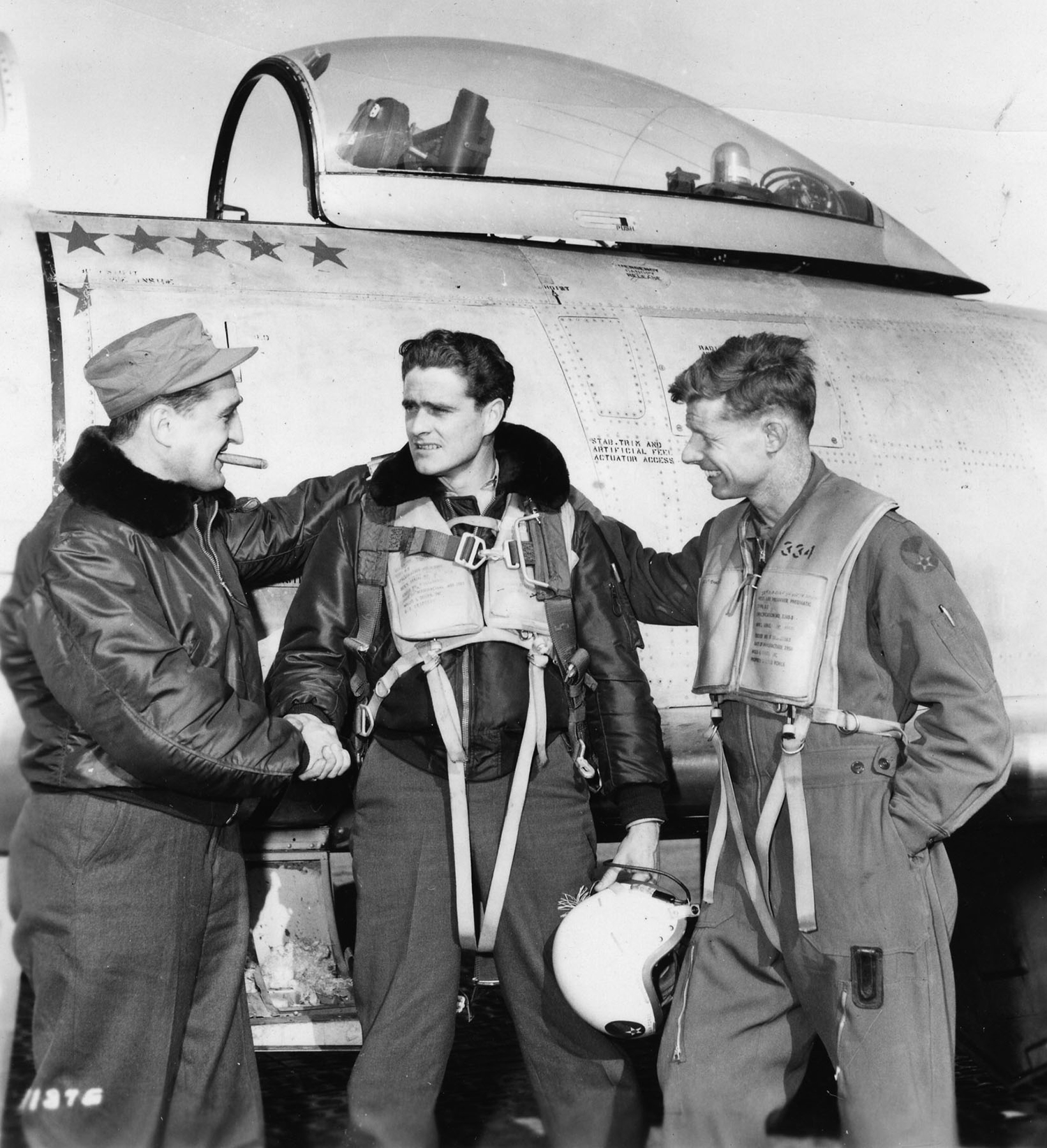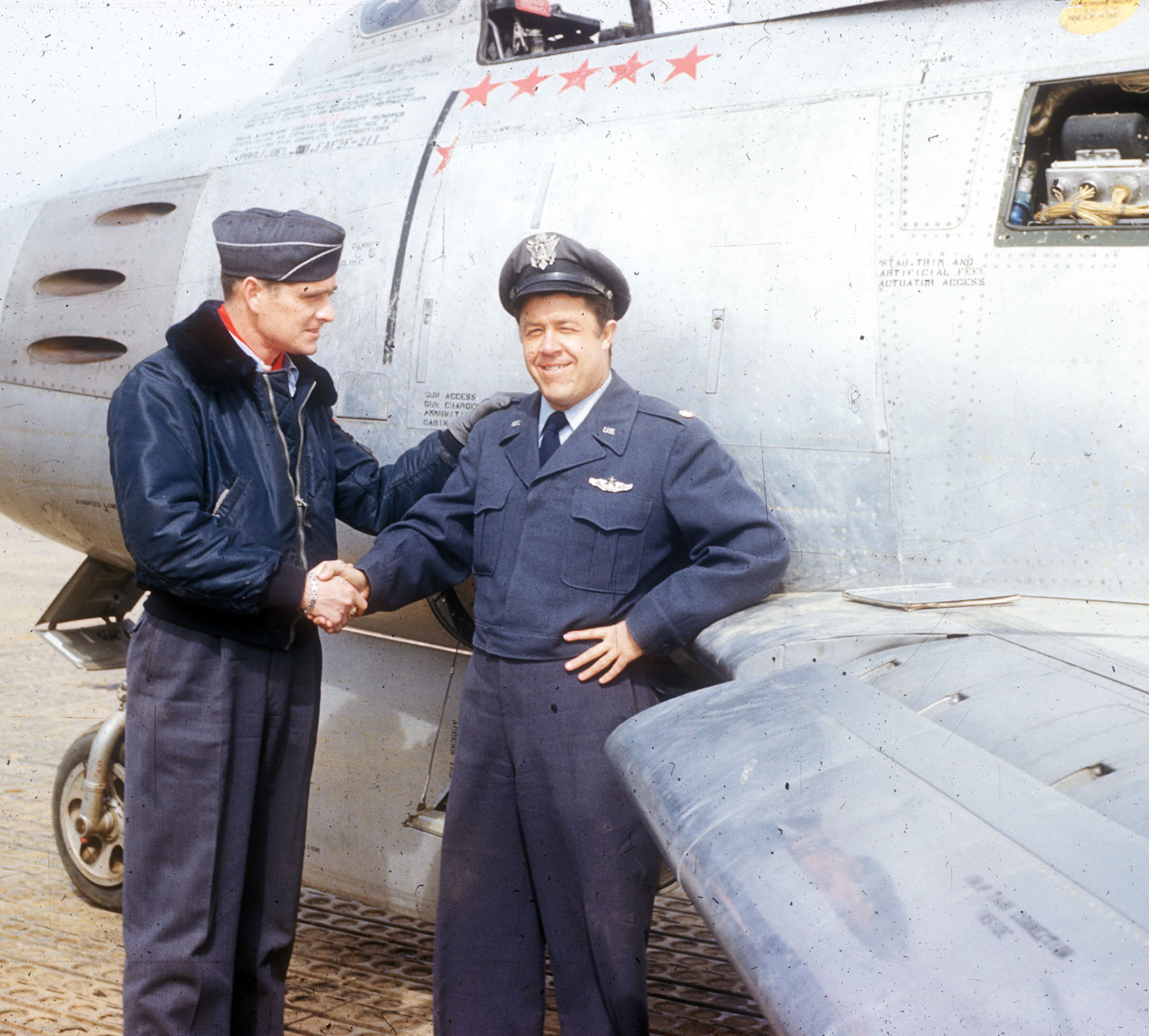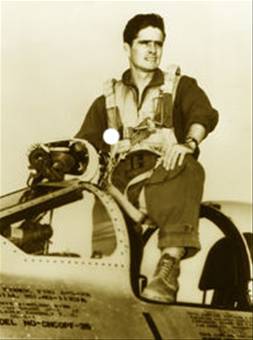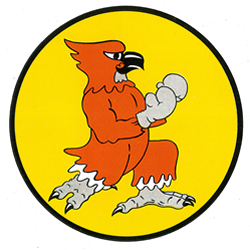Per wikipedia:
In September 1951, Whisner deployed with the 334th Fighter
Interceptor Squadron of the 4th Fighter Interceptor Wing to Korea,
where he destroyed two MiG-15s in aerial combat and damaged four others,
before joining the 25th Fighter Interceptor Squadron of the 51st Fighter
Interceptor Wing in November 1951. He then destroyed another 4.5 MiG-15s
with 2 more damaged, with total 6 enemy aircraft destroyed in Korea.
During his time in Korea, he served under the command
of ETO's leading ace, Gabby Gabreski. Gabreski was an aggressive commander
and fostered a fierce rivalry between the 51st Fighter Interceptor
Wing and 4th Fighter Interceptor Wing, both F-86 Sabre wings, fueled
in part by the fact that the 4th had also been the keenest rival of
the 56th Fighter Group during World War II. Gabreski and a fellow
former 56th Fighter Group pilot, Colonel Walker M. Mahurin and Whisner
planned and executed a mission in early 1952 in which the F-86s turned
off their IFF equipment and overflew two Chinese bases. These missions
were known as clandestine 'Maple Special' missions.[note 2] Gabreski
brought with him from the 56th Fighter Interceptor Wing in June 1951.
Before the mission of February 20, 1952, Gabreski and
Whisner each had four MiGs credited as destroyed. During the mission,
Gabreski attacked and severely damaged a MiG 15 that fled across the
Yalu River into China. He broke off the engagement and returned to
base after his own airplane was damaged, where he claimed the MiG
as a "probable kill".
Whisner trailed the MiG deep into Manchuria trying to
confirm Gabreski's kill, but his Sabre ran low on fuel. He completed
the shootdown and returned to K-14 where he confirmed the kill for
Gabreski but did not claim it himself. Gabreski confronted him and
angrily ordered him to change his mission report, confirming Whisner's
own role in the kill. Whisner refused. Soon after, Gabreski recanted
his anger and the two shared the claim, as a consequence of which
three days later Whisner and not Gabreski became the first pilot of
the 51st FW to reach jet ace status.
As a result, Whisner was awarded his third Distinguished
Service Cross for being the first ace of the 51st Fighter Interceptor
Wing. He is also one of the two airmen to receive the Distinguished
Service Cross three times.
For a two-war total of 22 destroyed in the air, 1 probable,
6 damaged, and 3 destroyed on the ground, made him one of only 7 people
to have been an ace in both World War II and the Korean War. The others,
George Andrew Davis Jr., Gabby Gabreski, Vermont Garrison, Harrison
Thyng, and James P. Hagerstrom, are all Air Force pilots, as well
as John F. Bolt of the U.S. Marine Corps.

Source:
https://en.wikipedia.org/wiki/William_T._Whisner_Jr.





